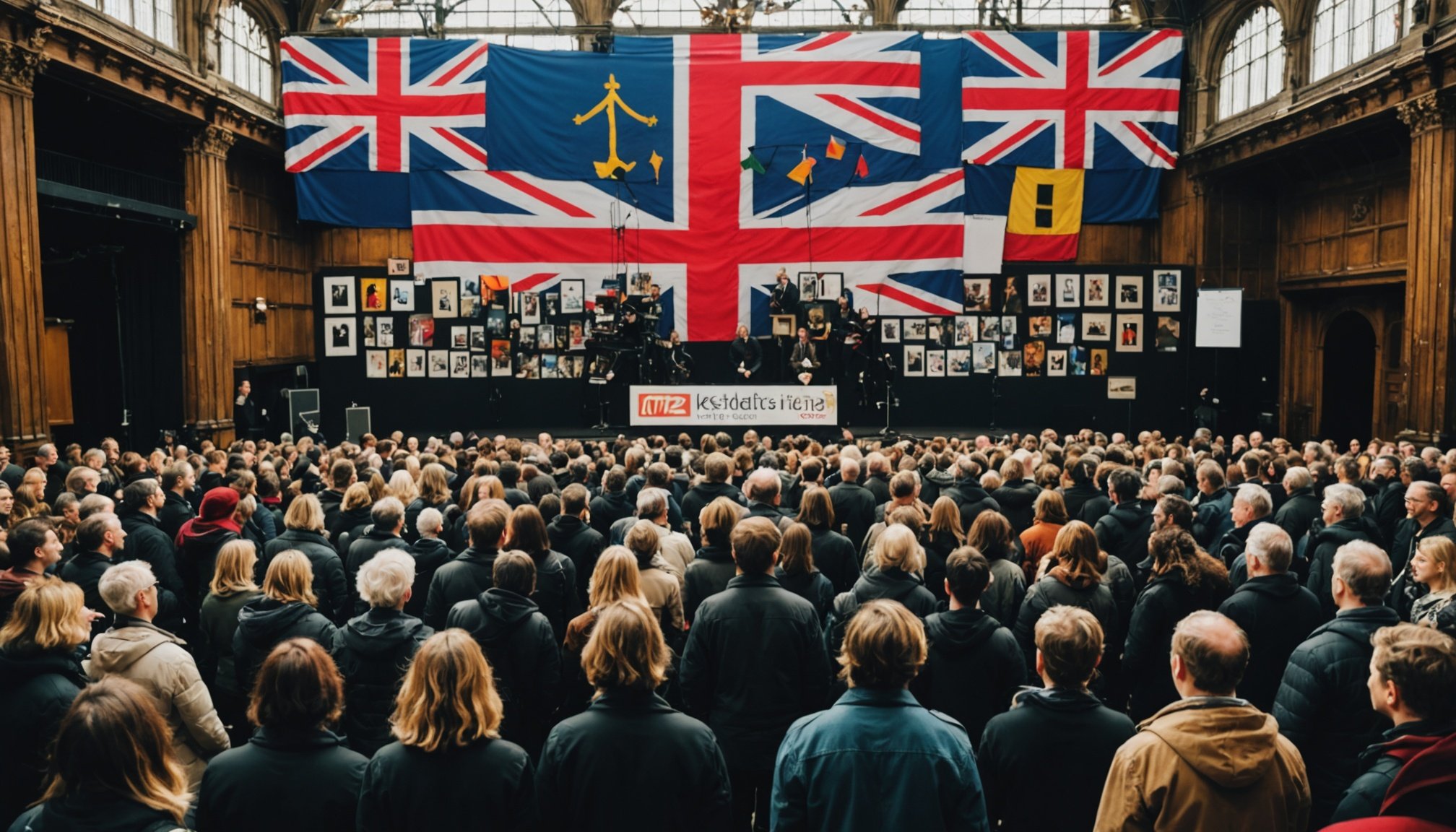Current State of the UK’s Arts Scene
As the UK arts scene emerges from the shadows of the pandemic, it is undergoing a significant transformation. Prior to COVID-19, the arts sector was thriving, contributing substantially to both the economy and cultural life. However, the pandemic led to widespread closures and operational disruptions, deeply impacting artists and organizations alike.
In the pursuit of recovery, key statistics reveal an encouraging rebound. Participation rates are gradually climbing, with attendance at exhibitions and performances seeing a marked increase. Theatre audiences, for instance, are showing a solid return, while visual arts venues report a surge in interest as people seek cultural experiences post-lockdown.
Additional reading : How is technology revolutionizing healthcare in the uk?
Post-COVID arts trends are reshaping the landscape dramatically. Digital platforms have become integral, offering virtual exhibitions and performances which widen access and engagement. There’s a noticeable shift towards hybrid models that combine in-person and online experiences, catering to diverse preferences and ensuring broader participation. Additionally, collaborative ventures across different art forms are becoming more prevalent, fostering a rich, interdisciplinary environment.
These shifts highlight the adaptability and resilience of the UK arts scene, setting the stage for a revitalized and more inclusive cultural sector.
Have you seen this : Evolving strategies: the transformation of uk public health in the wake of recent pandemics
Impact of COVID-19 on Different Art Forms
The COVID-19 pandemic had profound effects on various art forms, necessitating rapid adaptations throughout the sector. With lockdowns and social distancing measures in place, traditional modes of experiencing art were disrupted.
Visual Arts
Visual arts faced significant challenges with physical exhibitions temporarily halted. In response, galleries and museums quickly adapted, launching virtual exhibitions that allowed audiences to explore artfrom the comfort of their homes. These online showcases expanded reach, introducing art to audiences who might not have visited in person, thereby democratizing access to visual culture.
Performing Arts
Theatrical productions were deeply impacted, as live performances became impossible. However, ingenuity bloomed as artists explored creative avenues like streaming performances and virtual reality shows. Productions became increasingly innovative, blending live and recorded elements to maintain audience engagement. This hybrid model not only weathered the pandemic storm but also set new standards for inclusivity in performances.
Literature and Publishing
The literature and publishing industry saw shifts in both consumption and delivery. Reading habits evolved as more readers turned to e-books and audiobooks, while book fairs and author events migrated online. This transformation kept the literary community connected and fostered new ways to engage with audiences. The pandemic thus redefined traditional art consumption and inspired enduring innovations.
Funding and Support for the Arts
The recovery of the UK arts has been significantly bolstered by a series of funding initiatives and support systems aimed at offsetting the pandemic’s impact. The government has been pivotal in this effort, launching grants and financial aid targeted at rebuilding and sustaining the arts sector. These initiatives are essential in providing much-needed relief and resources for organizations and artists striving to rejuvenate their practices.
Arts funding post-COVID isn’t solely reliant on government intervention. Private sponsorships and fundraising campaigns have emerged as crucial complementary support structures. Private entities have injected funds, thereby ensuring a diverse flow of financial support which aids in cushioning the sector against future uncertainties.
Community-based initiatives have also played a vital role in fostering recovery. By bolstering government support for artists, local communities have cultivated environments where artists can thrive. This grassroots backing emphasizes the importance of local engagement in sustaining artistic efforts.
Newly-founded community campaigns have targeted local artists and organizations, providing them with platforms to innovate and share their work. Such initiatives inject energy into the local arts scene, making it more resilient against economic challenges.
Innovative Projects and Collaborations
The arts innovation surge post-pandemic has led to remarkable collaborative art projects that not only showcase creativity but also resilience. A notable example is the collaboration between renowned galleries and tech firms to offer immersive digital experiences. This partnership has made art more accessible, engaging audiences globally from their living rooms.
Case studies illustrate inspiring recoveries through joint ventures. Artists and organizations such as the National Theatre and various independent groups have teamed up to produce hybrid performances that blend live talent with digital artistry. These collaborations exemplify how teamwork can lead to artistic success despite challenging times.
Technology’s impact on art creation and distribution has been transformative. Tools like VR and AR are redefining traditional art forms, allowing creators to experiment with new mediums and expand their creative boundaries. This tech integration not only enhances the artistic process but also widens its distribution, offering creators a platform to reach diverse audiences like never before.
Such innovations underline an exciting future for the arts, where collaboration and technology intersect, paving the way for boundary-pushing creations and inclusive participation.
Community Engagement and Accessibility
Community engagement is pivotal for the UK arts scene, now recovering post-COVID. Local art festivals play a crucial role in uniting neighborhoods, rejuvenating community interest, and boosting participation. By showcasing diverse talents and providing interactive experiences, these festivals foster a sense of belonging and appreciation for local culture.
Outreach programs are essential in reaching marginalized communities, ensuring that everyone has equal access to the arts. These initiatives provide tailored art workshops and events, designed to break down barriers and encourage participation from underrepresented groups. Through these efforts, the arts become a tool for empowerment and cultural expression across diverse societal segments.
Additionally, digital access initiatives have emerged as a hallmark of inclusivity. Online platforms bridge gaps, allowing audiences to enjoy a range of performances and exhibitions remotely. With virtual tours, streamed performances, and interactive online workshops, arts organizations can engage wider audiences than ever before.
Each of these elements—festivals, outreach, and digital access—contribute significantly to building an inclusive arts environment. They are key to ensuring that artistic experiences are not just preserved but expanded, reaching everyone regardless of their background or location.
Interviews and Insights from Artists and Organizers
Delving into interviews with artists reveals personal stories marked by resilience. Many artists recount their journey of adapting to new conditions, highlighting creative pivots crucial during recovery. Sculptor Anna Martin, for instance, shares her experience transitioning to digital showcases, allowing her work to reach global audiences, a feat unimaginable pre-COVID.
Meanwhile, organizer perspectives on recovery offer valuable insights into the challenges and successes faced by art institutions. Linda Hayes, a festival director, emphasises the importance of hybrid models. She states that blending in-person and digital events provided flexibility that not only ensured continuity but expanded audience reach.
As for what artists envision for the future, there is a collective leaning towards maintaining the digital advances made. Visual artist James Cole envisions a future where virtual exhibitions exist alongside traditional venues, enhancing accessibility. These perspectives illustrate a sector in transformation, blending the old with the new for a more inclusive and vibrant arts community. Conversations with these creatives and leaders underscore the optimism and dedicated effort driving the recovery and evolution of the arts in the UK.





